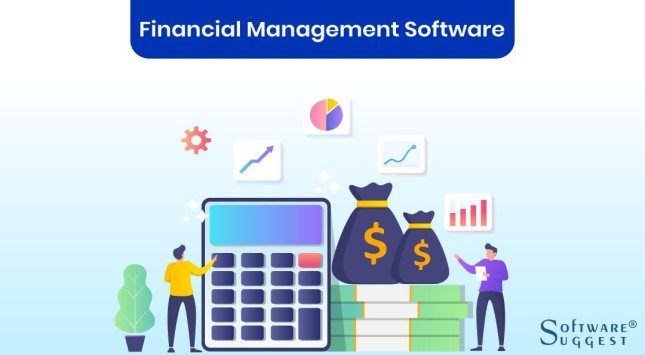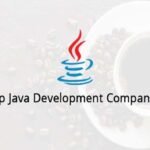
Each business model presents unprecedented challenges when it comes to valuation.
The SaaS business model has been in the market for quite a while now.
It is continuously developing in popularity as bandwidth increases. And with the increase in demand, business experts who specialize in business valuations learned a great deal regarding SaaS as a business model.
They figured out how to value a company that makes use of it.
This post will study what a SaaS company is and the key metrics you need to know about accurately creating a SaaS-based business valuation.
You May Read: Five Differences between Bookkeeping and Accounting
SaaS Company
SaaS stands for Software as a Service. Many businesses offer services worldwide through a web-based application using the SaaS business model with an expanding software market.
Software as a Service redefined the way companies satisfied their customer needs, making it more productive in every aspect. We will study industry valuation and the top 3 ways later in this article.
Let us first understand what a SaaS company is and its overview.
What is a SaaS company?
An organization that uses software to host an application where its customers can access its services is a SaaS company. In order to offer its customers a web-based platform, the company designs and produces a service.
Consumers can reach these services remotely without any restrictions, all around the world, and can expand around the world without any increase in the cost of delivery.
Several servers are maintained in a SaaS company that contains a database. Therefore, clients can easily reach the app with any device on the web. However, a monthly or yearly subscription is made by the customers of a SaaS application.
Usually, a subscription of the user depends on the amount of data they need to store. Various kinds of subscriptions are available based on multiple factors like the number of users, the level of technical assistance required, or the total amount of data space needed.
A business function is there for every line in an organization. Saas has different forms of application available in the market.
The most popular SaaS applications are:
- CRM or Customer resource management. The first and the most commonly used application is CRM. Companies provide this application to businesses to maintain their customer data and track their sales through each pipeline.
- Project Management is software that a company presents to other businesses. This software helps the associates in communicating and staying on course. Several companies direct on providing accounting and invoicing services through these applications to other companies.
- Data Management is another type of service that the company offers. They help to analyze and secure the data of a company on the cloud.
- Web hosting and e-commerce on remote servers can tackle all details of an online business.
- Human Resource software offers businesses to manage and record the hiring process, manage the payroll, and track employee hours. BambooHR is one such company that provides such software.
- ERP or enterprise resource management, as the name suggests, is used by enterprises. It is a system that consists of and offers various SaaS applications to big companies.
SaaS Industry Overview
One can invest and utilize several datasets to evaluate how SaaS has grown in the past and how it continues to grow as we move ahead in 2024. Two significant datasets are from Crunchbase’s research at the end of 2018 and SaaS Capital’s research as 2024 began.
Using this data, we can see trend lines developing to help give us a better idea of the SaaS market’s current and near-future health. The data indicates that it is excellent for those betting on the continued success of SaaS as a business model. The Covid-19 situation also has impacted the Saas valuations.
If we look at the SaaS capital data, we can see a massive jump in SaaS valuations in 2024. As a deadly and highly infectious virus caused lockdowns worldwide, businesses struggled to find a way for their staff to continue working.
Zoom became the star of the pandemic, which was already seeing high adoption rates. Its whopping 367% growth in that year reveals just how much COVID-19 impacted the bottom line for the company.
It must be noted that all companies didn’t benefit nearly as much as Zoom did. Many SaaS companies did see growth as a result of a workforce forced to work from home.
SaaS Valuation
A SaaS business valuation is a method used by investors and owners to determine a company’s economic value. When it’s time to exit or find investors, various factors quantify a company’s risk and reward, opportunity cost, and every other value-determining quality while ensuring you’re not leaving any money on the table.
It isn’t effortless to define the value of a company. Each valuation is impacted by the type of business model, value proposition, and many more factors. Understanding SaaS valuation attributes will ensure that you are not making a bad deal or underestimating the worth of the company.
How is SaaS Valuation Different from Other Industry Valuations?
The moment it comes to valuing B2B SaaS companies, investors analyze diverse company attributes. B2B SaaS firms differ from the traditional business in a few ways:
- They generate high amounts of recurring revenue rather than single purchases.
- Excessive gross margins go down over time.
- Renewal rates, which are a vital driver of long-term success.
- Improvement of Customer service level as they pay.
Additionally, as software businesses don’t have finite supplies as manufacturers or retailers, B2B SaaS companies don’t experience supply chain limitations. SaaS businesses typically fall within the 4x – 10x annual profit (SDE) range, which many SaaS metrics can determine. In the initial assessment, it is helpful to filter these variables into a few that have the most influence:
- The business age
- Owner involvement.
- Growth trends
- Churn and other SaaS metrics.
Assessing the above metrics assists in whether a SaaS business’ multiple falls towards the low or high end of the valuation spectrum.
Valuing a SaaS Company
Valuing a SaaS company can be a challenging task especially in case you are not adept with all the terms and conditions that play a major role in valuing it. Given below are the points that will help with valuing a SaaS company. Here are the top 3 ways to value a Saas company:
Revenue-Based Valuation
Annual Recurring Revenue (ARR) is the first method of valuing a software business. The buyers of ARR will happily pay multiples of ARR as they take a look at the value of recurring revenue. An increasing number of private equity firms are magnetized towards this category of valuations.
A few consider this the last option of valuation. In our opinion a revenue-based valuation is optimal if your SaaS company has just achieved product-market fit (PMF), you have a T2D3 growth, or you’ve earned $1 to $100 million ARR.
It would be best to have an ARR more significant than $2 million and YOY growth rates over 50% to achieve a valuation based on a revenue multiple. In case your SaaS company is experiencing hyper-growth, it is suggested to opt for a revenue-based valuation over an EBITDA-based valuation because your revenue will grow, but you won’t be super profitable. We will discuss EBITDA further in this article.
SDE Based Valuation
The SDE stands for Seller Discretionary Earnings and is generally used to value businesses valued under $5 million with no management team and a slow growth rate. SDE is the best way to accurately reflect the underlying earnings and power of a small enterprise.
Note that the majority of the small and medium enterprises depend on the owner. The owner’s salary might not be the same as the market rate, and note that the owner can also record personal expenses under the company’s name to avoid tax. All these costs are added into the calculation to determine the true and full potential of the earning power.
The Seller Discretionary Earnings is the Revenue – COGS – OPex + Owner compensation. These terms mean:
- Revenue – The sales that the business operations generate.
- COGS – The direct cost the company incurred for producing the goods sold.
- OPEX – The primary operating expenditures of the business, such as rent, utilities, and salaries.
- Wages paid – The owner for his work is the owner’s compensation.
EBITDA Based Valuation
EBITDA stands for earnings before interest, tax, depreciation, and amortization. It is used by the financial metric to quantify the general business financial execution. Also, EBITDA shows how productive an organization is. Know that it is not the only metric you will need to decide your business performance.
Still, you will also need the business’s revenue to give insights about the incoming profits and money that the company has. To see where you stand, you will have to calculate the EBITDA margin and compare it to the industry’s average.
Use the following equation in order to calculate SaaS company’s EBITDA:
Net Income + Interest + Taxes + Depreciation + Amortization
Finding the Multiple
The multiple is one crucial part of the equation and is affected by many factors that are related to the business. These factors span a wide variety of aspects, such as financial and operational aspects. But ultimately, it comes down to a few major factors such as the sustainability of the business, the business’s scalability, and transferability.
Any factor that directly or indirectly affects these core drivers will influence the multiple. A proprietary internal valuation model is used by FE International to derive the value of a SaaS business.
What Can You Do to Increase the Value of Your SaaS Business?
It is important to have an exit strategy for any company. You can add thousands of dollars to increase the value of a company by opting for proper steps before the sale. Note that there are several strategic moves you make before selling to increase your SaaS business’s value. Here are a few of the key strategies:
Decrease Churn
Churn is an essential aspect of SaaS valuation. The crucial part of it is to reduce the churn ahead of coming to market. You can use numerous ways to reduce churn.
Deploy the Development and Support
It is easy to outsource the development and support. Note that both passivity and non-technical premium can be connected to SaaS businesses that have outsourced development and customer support. It is calculated that outsourcing two components can lead to numerous compensations of between 0.5x – 0.75x.
Also, it can help decrease the assumed owner replacement cost. This results in effective outsourcing that can be one of the most remarkable levers of exit value for SaaS business owners. All one needs to focus here is on practical and proven outsourcing.
Secure Intellectual Property (IP)
This is one thing noticeable, but a number of business owners fail to secure their intellectual property ahead of a sale properly. It is of utmost importance that you secure IP for SaaS businesses, particularly for more than $500K transactions. It can have detrimental effects on the transactions.
Document the Source Code
A well-documented and tested source code is a differentiating factor of premium-valued SaaS businesses. For investors looking to scale the business into 7-figures and above, well-documented code is essentially a must-have for investors, particularly on the upper end ($500K+).
It can be one of the deal-killing issues. This is easily avoidable through adequate preparation ahead of coming to market.
Ready to value your Saas Company?
Saas valuation multiples are indispensable as they all contribute to the valuation. Once the evaluation is done, the next step will be your sales option and exit strategy. You can get a great idea of your company’s valuation more precisely in case you involve a professional broker.



